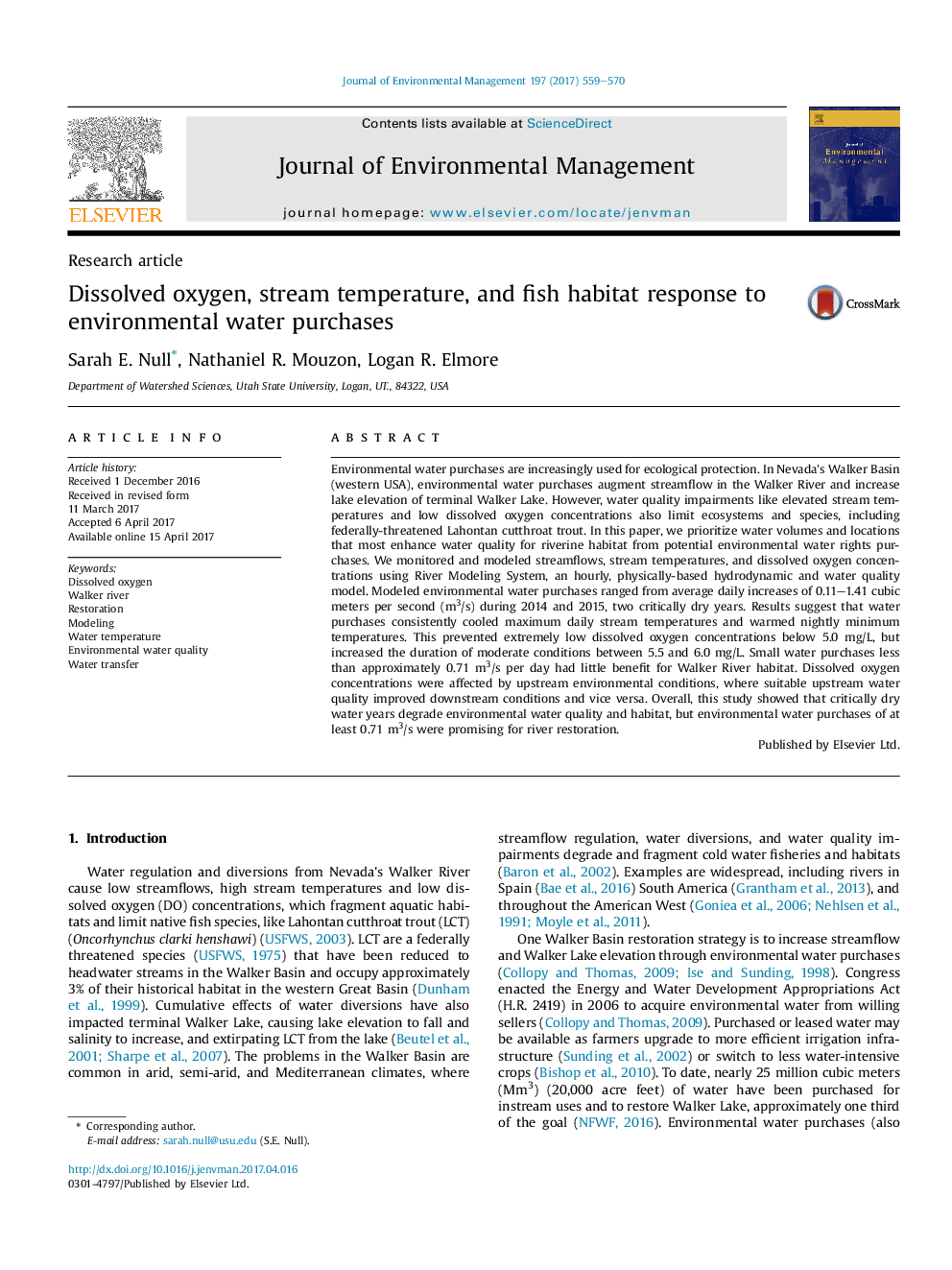| Article ID | Journal | Published Year | Pages | File Type |
|---|---|---|---|---|
| 5116980 | Journal of Environmental Management | 2017 | 12 Pages |
â¢Environmental water purchases are increasingly implemented for ecological protection.â¢Hourly hydrodynamic and water quality models estimated streamflows, temperatures, and dissolved oxygen concentrations.â¢Water purchases usually cooled maximum daily stream temperatures and warmed nightly minimum temperatures.â¢Water purchases prevented dissolved oxygen concentrations below 5 mg/L, but increased the duration of 5.5 to 6.0 mg/L concentrations.â¢Critically dry water years degrade aquatic habitat, but environmental water purchases are promising for river restoration.
Environmental water purchases are increasingly used for ecological protection. In Nevada's Walker Basin (western USA), environmental water purchases augment streamflow in the Walker River and increase lake elevation of terminal Walker Lake. However, water quality impairments like elevated stream temperatures and low dissolved oxygen concentrations also limit ecosystems and species, including federally-threatened Lahontan cutthroat trout. In this paper, we prioritize water volumes and locations that most enhance water quality for riverine habitat from potential environmental water rights purchases. We monitored and modeled streamflows, stream temperatures, and dissolved oxygen concentrations using River Modeling System, an hourly, physically-based hydrodynamic and water quality model. Modeled environmental water purchases ranged from average daily increases of 0.11-1.41 cubic meters per second (m3/s) during 2014 and 2015, two critically dry years. Results suggest that water purchases consistently cooled maximum daily stream temperatures and warmed nightly minimum temperatures. This prevented extremely low dissolved oxygen concentrations below 5.0Â mg/L, but increased the duration of moderate conditions between 5.5 and 6.0Â mg/L. Small water purchases less than approximately 0.71Â m3/s per day had little benefit for Walker River habitat. Dissolved oxygen concentrations were affected by upstream environmental conditions, where suitable upstream water quality improved downstream conditions and vice versa. Overall, this study showed that critically dry water years degrade environmental water quality and habitat, but environmental water purchases of at least 0.71Â m3/s were promising for river restoration.
